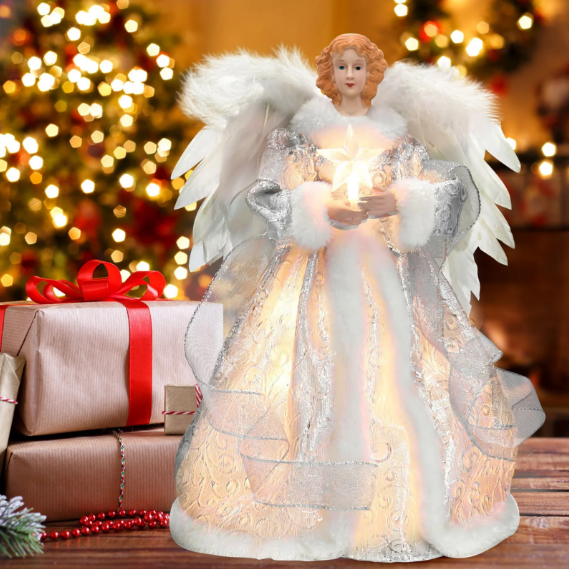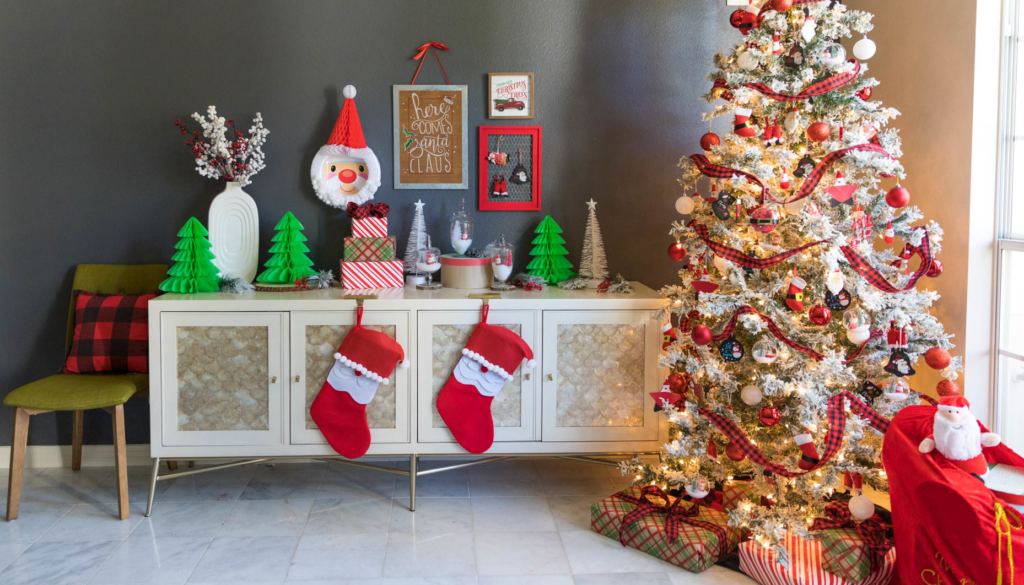
Christmas tree toppers are a cherished tradition during the holiday season, serving as the crowning ornament on Christmas trees around the world. Their origins can be traced back centuries, evolving from religious symbols into diverse artistic expressions that reflect modern tastes and personal styles.
Early Origins and Symbolism

The practice of placing decorative items at the top of Christmas trees is believed to have started in 16th-century Germany. Initially, these trees were adorned with apples and wafers, symbolizing the Garden of Eden and the Eucharistic host respectively during Christmas celebrations tied to the Feast of Adam and Eve on December 24. This 'paradise tree' laid the groundwork for the Christmas tree as we know it today, which would come to include various decorative elements, including specific tree toppers[6][10].
As the tradition progressed, candles were introduced to the apex of the tree to signify the light of Christ, further enhancing its religious significance. By the 18th century, angels and stars became the predominant forms of tree toppers. Angels represented the heavenly messengers from the Nativity story, while stars symbolized the Star of Bethlehem, which guided the Wise Men to Jesus[1][4][11]. Over time, the placement of a tree topper became a way for families to express their faith and commemorate the Christmas story through visual elements.
Evolution of Designs

The 19th century marked a significant shift in the design and materials used for tree toppers. Angel and star toppers emerged as the most popular choices, crafted from glass and metal as production techniques evolved. During this period, illuminated tree toppers also became common, allowing the stars and angels to glow alongside the electric lights adorning the tree[2][5][6].
Prior to this evolution, early Christmas trees were often topped with figures representing religious themes. In addition to angels and stars, some families began using whimsical decorations such as Santa Claus, reflecting the playful spirit of Christmas celebrations. Santa Claus toppers, particularly popular in the mid-20th century, served to embody the joy of gift-giving associated with the holiday season[4][5][8].
Cultural Variations

Different cultures have adopted unique interpretations of the Christmas tree topper. In Britain, fairies are commonly used, a nod to festive folklore, whereas in the United States, stars and angels remain the most recognized. In Japan, where Christmas is largely a secular celebration, various ornaments—including characters from popular media—are used to top trees, showcasing the local culture’s adaptation of the holiday[1][2][3].
The choice of which topper to use has increasingly become a means of personal expression. This trend has prompted families to create DIY toppers using materials that hold significance to them, reflecting family histories or traditions. These unique creations allow families to add a sentimental touch to their holiday decorations[7][9].
Contemporary Trends

Today, the array of Christmas tree toppers has expanded significantly beyond traditional stars and angels. Contemporary designs include abstract forms, minimalist structures, and even playful novelty items that range from sports themes to pop culture icons. These options reflect the changing aesthetic preferences of holiday decor as well as the desire for individuality within seasonal celebrations[2][7][9].
Moreover, many people have embraced lighted tree toppers, especially for large commercial displays and outdoor Christmas trees, creating a dazzling and festive atmosphere. The integration of illuminated toppers not only enhances visibility but also transforms the tree into a captivating centerpiece during nighttime festivities[5][8].
Conclusion
The tradition of Christmas tree toppers has a rich history rooted in religious significance and cultural adaptations. From the early use of simple candles to the current trend of personalized and illuminated designs, these ornaments encapsulate a blend of personal expression, cultural symbolism, and historical tradition. Whether a star, an angel, or a custom creation, the tree topper continues to be a focal point in holiday celebrations, completing the decor and representing the spirit of Christmas for families around the globe. Together, these diverse toppers highlight both the timeless nature of the holiday and the evolving ways in which people celebrate it each year.
Get more accurate answers with Super Pandi, upload files, personalized discovery feed, save searches and contribute to the PandiPedia.
Let's look at alternatives:
- Modify the query.
- Start a new thread.
- Remove sources (if manually added).